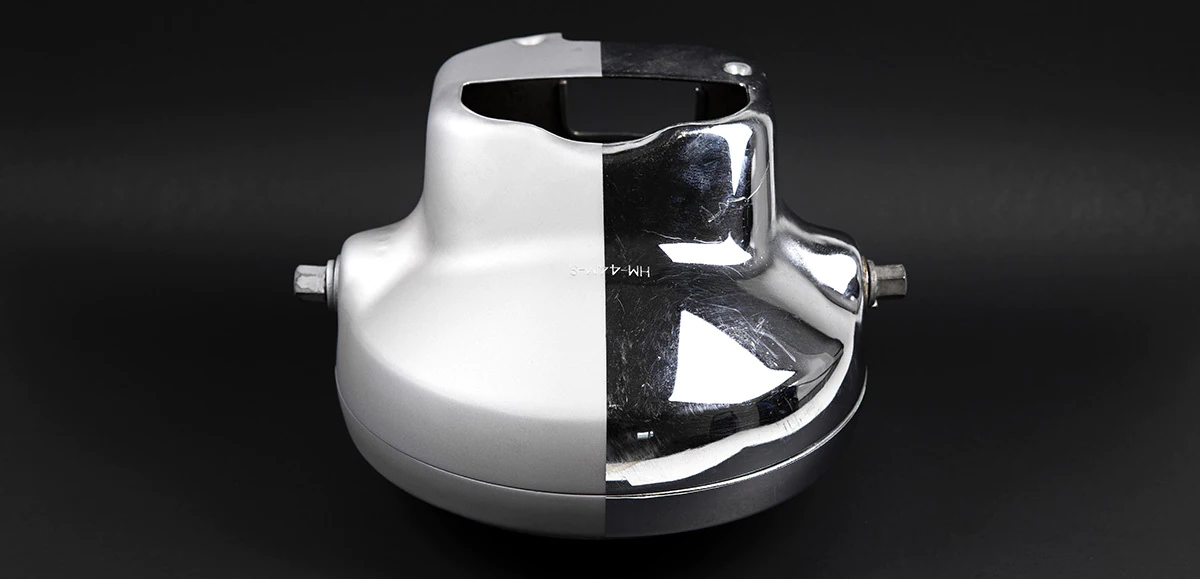How to Prep A Chrome Plated Surface
A PERFECT SURFACE FOR CERAKOTE
Sandblasting an existing finish down to bare substrate is an important and necessary step for most Cerakote applications. Some finishes, however, are more difficult to remove with blasting media to achieve an adequate surface profile. A quality hard chrome plating is one example of a finish not easily or quickly removed. Luckily, it isn’t necessary to remove hard chrome plating completely for Cerakote to mechanically adhere. A quality hard chrome finish is a perfect surface for Cerakote to be applied over the top of.

ETCH-BLASTING
Instead of spending valuable time sandblasting hard chrome plating completely off the substrate, etch-blasting a profile into the chromed surface is sufficient for mechanical adhesion. Etch-blasting is achieved by setting the blasting cabinet air pressure to 30-40 psi, operating pressure. While blasting, move quickly and evenly across the part “matting” the chrome finish. Repeat until the whole part has an even etched profile and no “shiny spots.”
If the original finish is not a true hard chrome, but a decorative chrome, the plating will flake off and must be removed completely. This same rule also applies to hard anodizing, making etch-blasting the most efficient course of action.
Cerakote is only as strong as the substrate it’s applied to.
Applying Cerakote to a finish that is not well adhered to the base metal will result in the Cerakote coming off as the original finish does.
